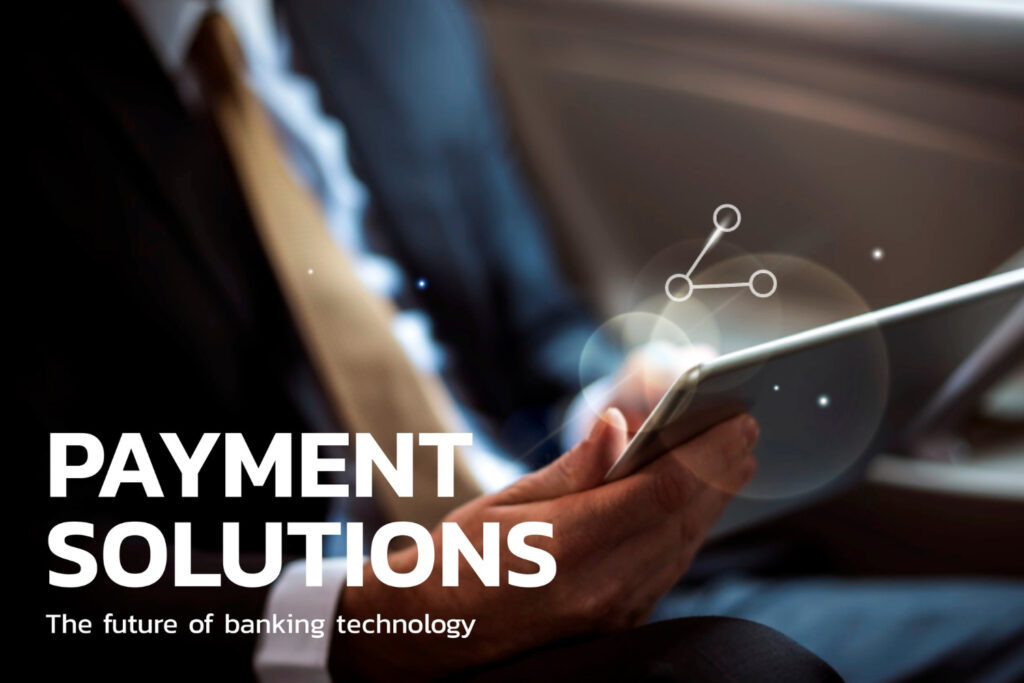
In the fast-paced world of finance and commerce, payment processing is evolving at an unprecedented rate. As technology continues to advance, new trends and innovations are shaping the way we make transactions. In this article, we will explore the future of payment processing, highlighting key trends and innovations that are set to revolutionize the industry.
1. Contactless Payments
Contactless payments, powered by Near Field Communication (NFC) technology, have gained significant traction in recent years. With the rise of smartphones and smartwatches, consumers can make secure and convenient payments by simply tapping their devices. This trend is expected to continue growing, with more businesses adopting contactless payment options and consumers embracing the speed and ease of this method.
2. Biometric Authentication
Security is paramount in payment processing, and biometric authentication methods are at the forefront of ensuring safe transactions. Technologies such as fingerprint recognition, facial recognition, and even iris scanning are becoming increasingly common for verifying a user's identity. Biometric authentication offers a higher level of security and convenience, reducing the risk of fraud.
3. Digital Wallets
Digital wallets, such as Apple Pay, Google Pay, and Samsung Pay, have transformed the way consumers manage their payments. These wallets allow users to store their credit card information securely and make transactions without the need to carry physical cards. As digital wallets continue to gain popularity, businesses are integrating them into their payment systems to offer seamless and secure checkout experiences.
4. Cryptocurrency Integration
The world of cryptocurrencies, led by Bitcoin and Ethereum, is making its mark on payment processing. Some businesses now accept cryptocurrencies as a valid payment method, offering customers an alternative to traditional currencies. As blockchain technology matures, it has the potential to streamline cross-border transactions and reduce processing fees significantly.
5. Internet of Things (IoT) Payments
The Internet of Things (IoT) is connecting an ever-growing number of devices to the internet, and this includes everyday items like refrigerators, cars, and wearables. In the future, these devices may become payment-enabled, allowing for seamless and automated transactions. Imagine your smart fridge reordering groceries and making payments on your behalf when supplies run low.
6. Voice Commerce
Voice assistants like Amazon's Alexa and Apple's Siri are not only changing the way we interact with technology but also how we make payments. Voice commerce allows users to shop and pay for goods and services using voice commands. As natural language processing and voice recognition technology improve, voice commerce is poised to become more prevalent.
7. Instant Payments
Traditional payment methods often involve delays, especially in cross-border transactions. Instant payment systems, such as the European SEPA Instant Credit Transfer or the Faster Payments Service in the UK, offer real-time transfer of funds 24/7. This trend is likely to spread globally, providing users with immediate access to their funds.
8. Blockchain-Based Settlements
Blockchain technology is not limited to cryptocurrencies; it also has the potential to revolutionize payment settlements. By providing transparency, security, and efficiency, blockchain-based settlement systems can reduce the time and cost associated with cross-border payments.
9. Decentralized Finance (DeFi)
Decentralized Finance, or DeFi, is a growing movement that leverages blockchain technology to create decentralized financial systems. These systems allow for lending, borrowing, trading, and other financial activities without traditional intermediaries. DeFi could disrupt traditional banking and payment systems in the future.
10. Enhanced Payment Security
With the increasing prevalence of cyber threats and data breaches, payment security remains a top priority. Innovations in fraud detection, encryption, and tokenization are continuously improving the security of payment transactions, ensuring that both businesses and consumers can transact with confidence.
Conclusion
The future of payment processing is characterized by innovation, convenience, and enhanced security. As technology continues to advance, businesses and consumers can expect more options and streamlined payment experiences. Staying informed about these trends and embracing the latest innovations will be crucial for businesses to remain competitive and provide customers with the best payment solutions.
The payment processing landscape is evolving rapidly, and those who adapt and leverage these trends will be at the forefront of shaping the future of commerce.
Topics
- Payment Processing Trends in the Gaming Industry
- The Future of Payment Processing: Trends and Innovations
- Choosing the Right Payment Processor for Your Gaming Business
- No Chargeback vs Traditional Payment Processors
- The Impact of No Chargebacks on Customer Trust
- Fraud Prevention in No Chargeback Merchant Accounts
Categories
- adult merchant accounts (7)
- alternative payments (10)
- Blockchain Merchant Account (1)
- chargeback (11)
- Chargeback Prevention (7)
- Cloud Payment Processing (1)
- Contactless Payment Processing (1)
- crypto currency merchant account (5)
- debt collection merchant account (1)
- Direct Response Merchant Account (1)
- ecigarette merchant account (1)
- Ecommerce (8)
- fantasy sports (2)
- Fantasy Sports Merchant Account (3)
- Forex Merchant Accounts (1)
- Global eCommerce (13)
- health care credit card processing (4)
- high risk merchant account (139)
- high risk payment gateway (44)
- high risk processing (72)
- Independent Software Vеndоrѕ (2)
- International Merchant Account (13)
- international merchant accounts (28)
- international payments (24)
- medical billing (4)
- merchant accounts (25)
- mobile payments (7)
- MOTO merchant account (1)
- Multiple Currency Payment Processing (5)
- nutra merchant account (5)
- Nutraceutical Merchant Account (5)
- offshore merchant accounts (11)
- Online Dating Merchant Account (1)
- Online Gaming Merchant Account (3)
- Online Gaming Merchant Accounts (4)
- p2p network payment processing (1)
- payment gateway (22)
- Payment Gateway Chargebacks (4)
- payment processing (60)
- payment processing gateway (65)
- Payment Processing Merchant Account (23)
- payment processing system (42)
- recurring billing (12)
- recurring payments (14)
- SaaS Billing (10)
- SaaS Payment Gateway (1)
- SasS Payment Processing (2)
- Secure Payment Processing (25)
- Telemedicine Merchant Account (1)
- Travel Agency Merchant Accounts (4)
- travel industry merchant account (4)
- travel industry payment processing (3)
- travel merchant account (3)